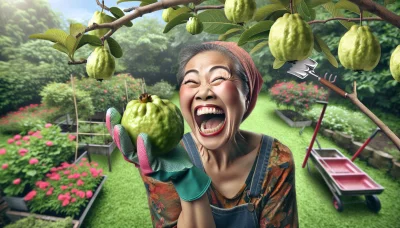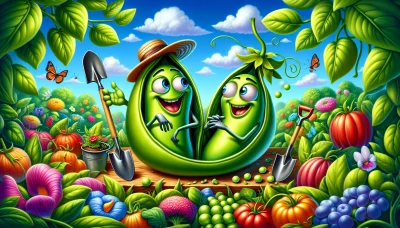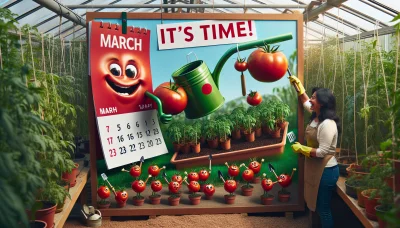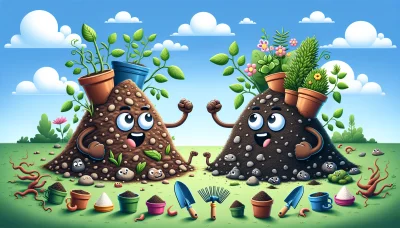Spiky fruit Quiz
Test Your Knowledge
Question of
Introduction to Spiky Fruits
Spiky fruits hold a unique fascination among gardening enthusiasts and fruit lovers alike. These intriguing specimens of nature, with their formidable exteriors, are not only a feast for the eyes but also offer a variety of flavors and nutritional benefits. From the widely recognized durian, known as the 'king of fruits', to the lesser-known rambutan and dragon fruit, the world of spiky fruits is vast and diverse. Each spiky fruit comes with its own set of challenges in cultivation, adding an element of excitement and achievement for gardeners. Their exotic appearance and the mystery surrounding their taste and texture invite curiosity and experimentation, making them a captivating subject for exploration in the world of gardening.
Top 7 Spiky Fruits for Your Garden
- Pineapple - A tropical delight, pineapples are not only delicious but also have a very distinctive spiky exterior. They require warm conditions to thrive.
- Durian - Known as the "king of fruits," durian has a spiky shell and a unique smell that is either loved or loathed. It's rich in nutrients and has a creamy texture inside.
- Dragon Fruit - With its vibrant pink or yellow skin and green scales, dragon fruit is visually striking. It's also packed with antioxidants and grows on a type of cactus.
- Rambutan - Similar in taste to lychee, rambutan has a hairy exterior. It's a juicy fruit that's rich in vitamin C and other essential nutrients.
- Jackfruit - The largest fruit that grows on a tree, jackfruit has a spiky, green exterior and a sweet, sticky flesh that is used in both sweet and savory dishes.
- Kiwano (Horned Melon) - Also known as horned melon, kiwano has horn-like spiky projections. Inside, it has a bright green, jelly-like fruit with a refreshingly fruity taste.
- Soursop (Graviola) - Soursop has a soft, spiky green exterior. It's known for its distinctive combination of strawberry and pineapple flavors with underlying creamy notes of coconut and banana.
Cultivating Spiky Fruits: Essential Tips
Growing spiky fruits, such as pineapples and certain types of cacti, can be a rewarding endeavor for any gardener. To ensure success, it's important to provide these plants with plenty of sunlight, as they thrive in bright conditions. Proper drainage is also crucial, as waterlogged soil can lead to root rot. When watering, aim for a deep soak rather than frequent light watering to encourage strong root development. Additionally, these plants often require a specific type of soil or potting mix, so be sure to research the needs of your particular fruit. With patience and the right care, you can enjoy the unique beauty and taste of spiky fruits right from your garden.
Common Challenges in Growing Spiky Fruits
- Pest Infestations: Spiky fruits like pineapples and durians can attract pests. Regularly inspect your plants for signs of pests and use organic pesticides to manage infestations without harming the fruit.
- Improper Soil Conditions: Most spiky fruits require well-draining soil rich in organic matter. Amend your soil with compost and ensure it has good drainage to prevent root rot.
- Inadequate Pollination: Some spiky fruits need specific pollinators to bear fruit. Encourage bees and other pollinators by planting a variety of flowering plants nearby.
- Climate Limitations: Many spiky fruits are sensitive to cold temperatures. If you live in a cooler climate, consider growing your fruits in a greenhouse or using frost cloths to protect them.
- Watering Issues: Overwatering or underwatering can stress plants, leading to poor fruit development. Use a moisture meter to check soil moisture levels and water accordingly.
- Physical Injury: The spikes and thorns of these fruits can make them difficult to handle and can injure the plant if not handled carefully. Use protective gloves and tools to manage and harvest your fruits safely.
The Nutritional Benefits of Spiky Fruits
Spiky fruits, often exotic and intriguing in appearance, are packed with an array of health benefits and nutritional values that can play a significant role in enhancing one's diet. These fruits, including durian, jackfruit, and dragon fruit, among others, are not only rich in vitamins and minerals but also possess unique properties that contribute to overall health and well-being. For instance, they are high in dietary fiber, which aids in digestion and promotes a healthy gut. Additionally, spiky fruits are a great source of antioxidants, which help in fighting off free radicals, reducing inflammation, and thus lowering the risk of chronic diseases such as heart disease and diabetes. Incorporating spiky fruits into your diet can also boost your immune system thanks to their high vitamin C content, while their varied range of nutrients supports healthy skin, aids in weight management, and can improve energy levels. With such a plethora of health benefits, spiky fruits are undoubtedly a nutritious addition to any diet, offering a delicious way to enjoy a host of vitamins and minerals.
Spiky Fruit Recipes for Gardeners
- Pineapple Salsa: Combine diced pineapple with jalapeno, red onion, cilantro, lime juice, and salt for a refreshing salsa.
- Durian Smoothie: Blend durian flesh with banana, coconut milk, and ice cubes for a creamy tropical smoothie.
- Dragon Fruit Salad: Mix cubed dragon fruit with sliced kiwi, strawberries, and a drizzle of honey for a colorful fruit salad.
- Rambutan Cocktail: Muddle rambutan in a glass, add ice, vodka, lime juice, and a splash of soda water for an exotic drink.
- Grilled Pineapple: Slice pineapple into rings, grill until charred, then sprinkle with cinnamon sugar for a smoky sweet dessert.
- Jackfruit Tacos: Shred cooked jackfruit and sauté with taco seasoning. Serve in tortillas with avocado, salsa, and lime.
Conclusion: The Joys of Growing Spiky Fruits
Growing spiky fruits in one's own garden offers a unique blend of challenges and rewards that can be deeply satisfying. Beyond the initial intrigue of their exotic appearance, these fruits, such as pineapples and durians, demand specific care and patience, fostering a deep connection between the gardener and their plants. The joy of finally harvesting these fruits is unmatched, providing a sense of accomplishment and the ability to enjoy fresh, flavorful produce that is often hard to find in stores. Moreover, the process enriches the gardener's knowledge and appreciation for diverse agricultural practices and the importance of patience and dedication in cultivating such unique varieties. The journey from planting to picking is filled with learning opportunities, making the cultivation of spiky fruits a rewarding endeavor for those willing to embrace the challenge.












